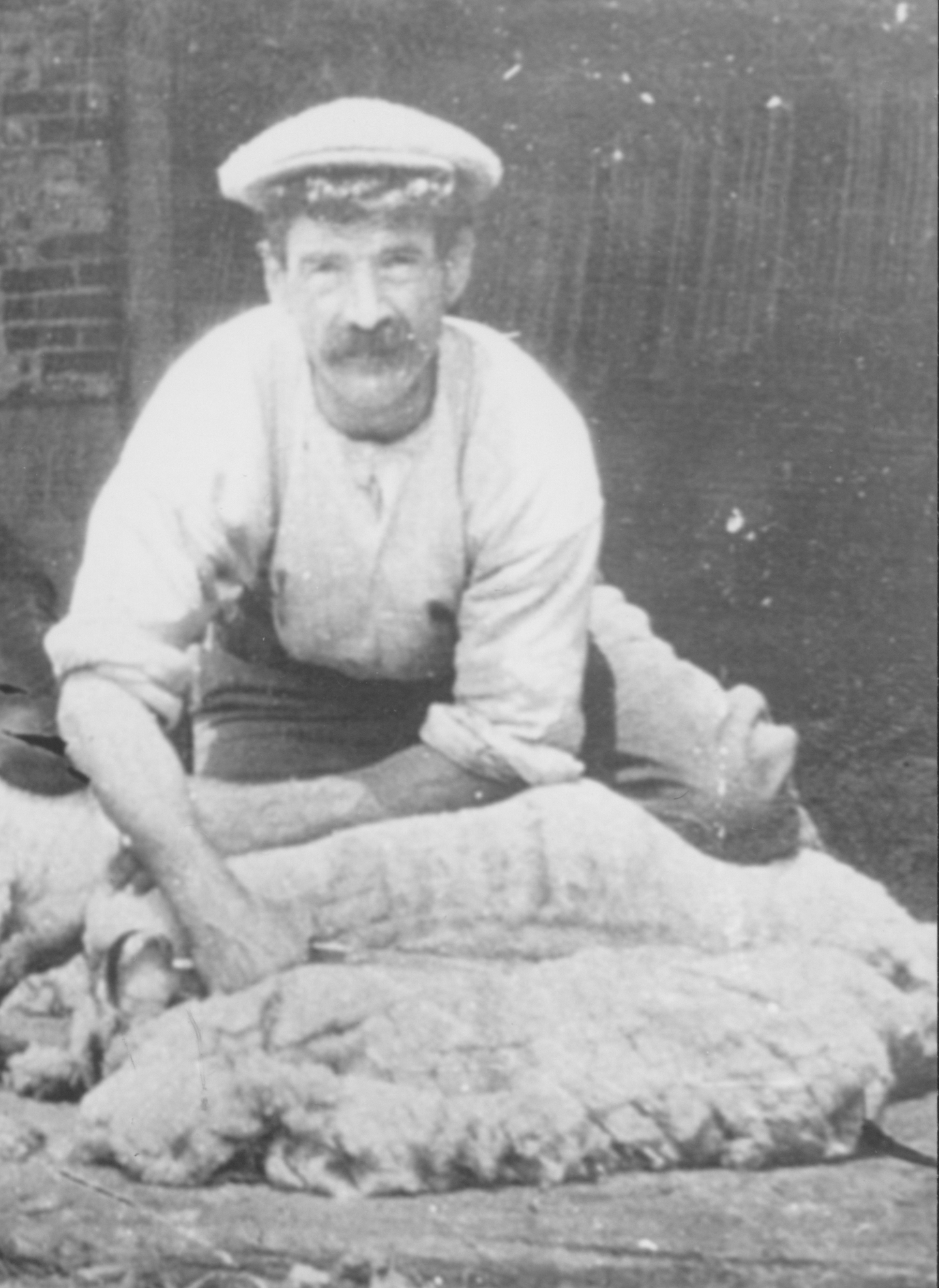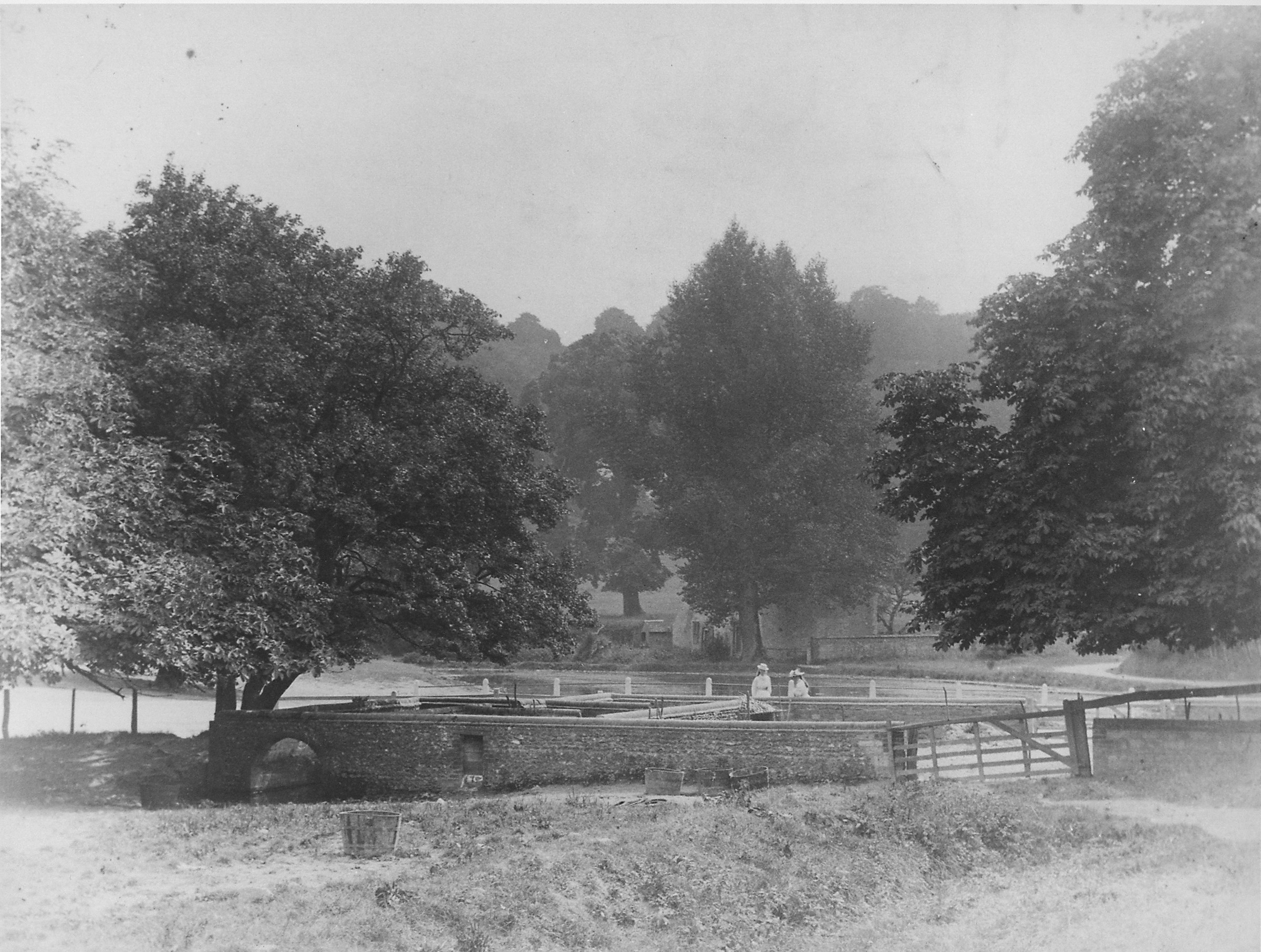What has brought about the most marked scenic change in the parish over the last couple of centuries ? Perhaps the building of the railway ? Or the chalk pits and limeworks ? Local people who can remember many changes feel that the replacement of open downland by forested hillsides has been the biggest change.
With the sale of parts of the Bonham Carter estate in 1927, War Down, Head Down and Holt Down were taken over by the Forestry Commission and trees planted from then on. Chalk turf is still present on Butser but, elsewhere along the downs, the need for home-produced food during the second world war saw miles of unfenced downland ploughed up for crops.
Before the Forestry Commission took over the hills, sheep used to graze on the downs. Several flocks would be in sight of each other: most belonged to the Bonham Carters, but Mr Seward had a flock at Weston, sheep from Bolinge Hill Farm grazed land next to Sesden’s Lane and there would be sheep on Butser Hill from Oxenbourne Farm at East Meon. Most of the sheep in the area were Southdowns – a breed reckoned to have the finest quality meat of any breed.
There would be thousands of sheep on the downs. They would crop the turf close, producing a lawn-like texture and ripping off any infant scrub before it could gain a hold.
In the daytime, shepherd boys would take the sheep onto the hills to graze. They would be brought down to some of the uphill fields each night to where sheep folds would have been pitched during the day by the Head Shepherd and his men. A fold was simply an area of fodder fenced off by hurdles. It was often arranged so that the outside row of hurdles in the morning fold became the back row of the new fold in the evening. Swedes and turnips were grown in some of the uphill fields to feed the sheep in the mornings and, of course, the sheep helped to manure the fields.
Sheep would be bought and sold at market in Petersfield, Chichester and elsewhere and there used to be big sheep fairs in the county in the summer months: an opportunity to buy young ewes to build up the flocks or perhaps a new ram.


